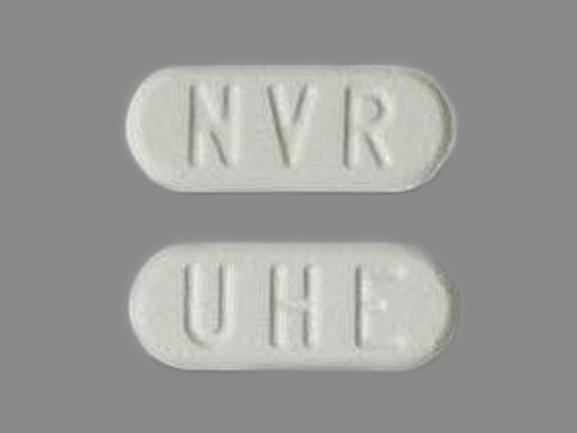Afinitor Disease Interactions
There are 8 disease interactions with Afinitor (everolimus).
- Liver disease
- Vaccination
- Renal disease
- Hematologic abnormalities
- Blood glucose
- Cholesterol
- Infections
- Wound complication
Everolimus (applies to Afinitor) liver disease
Major Potential Hazard, Moderate plausibility.
Everolimus exposure was increased in patients with mild (Child-Pugh class A), moderate (Child-Pugh class B), and severe (Child-Pugh class C) hepatic impairment. In patients with mild or moderate hepatic impairment, a dose reduction is recommended. Patients with severe hepatic impairment, everolimus may be used at a reduced dose if the desired benefit outweighs the risk.
MTOR inhibitor (applies to Afinitor) vaccination
Major Potential Hazard, Moderate plausibility.
The administration of live vaccines should be avoided during therapy with inhibitor of mTOR (mammalian target of rapamycin). It is recommended that close contact with individuals who have received live vaccines should be avoided because of the potential risk for shedding from the household contact and transmission to patient. It is recommended to be up-to-date with all required immunizations, as recommended by current immunization guidelines, before initiating therapy with these agents.
MTOR inhibitors (applies to Afinitor) renal disease
Major Potential Hazard, Moderate plausibility. Applicable conditions: Renal Dysfunction
Cases of renal failure, including acute renal failure and elevations of serum creatinine and proteinuria, some with a fatal outcome, have been observed in patients treated with inhibitors of mTOR (mammalian target of rapamycin). Therapy with these agents should be administered cautiously in patients with renal dysfunction, in particularly where patients have additional risk factors that may further impair renal function. Renal impairment is not expected to influence drug exposure, and no dosage adjustment is recommended in patients with renal impairment. Monitoring of renal function, including measurement of blood urea nitrogen (BUN), urinary protein, or serum creatinine, is recommended prior to the start of therapy and periodically thereafter.
Everolimus (applies to Afinitor) hematologic abnormalities
Moderate Potential Hazard, Moderate plausibility. Applicable conditions: Immunodeficiency
Hematologic abnormalities, including decreased levels of hemoglobin, lymphocytes, platelets, and white blood cell have been observed in patients taking everolimus. Caution is recommended when treating patients predisposed to hematologic changes. Periodic monitoring of complete blood count is recommended before starting therapy and periodically thereafter.
MTOR inhibitors (applies to Afinitor) blood glucose
Moderate Potential Hazard, Moderate plausibility. Applicable conditions: Diabetes Mellitus
Elevations in serum blood glucose levels have been reported in patients taking inhibitors of mTOR (mammalian target of rapamycin). Monitoring of fasting serum glucose levels is recommended prior to the start of therapy and periodically thereafter. Clinicians should achieve control of glucose levels before initiating therapy with these agents.
MTOR inhibitors (applies to Afinitor) cholesterol
Moderate Potential Hazard, Moderate plausibility. Applicable conditions: Hyperlipidemia
Elevations in cholesterol and triglyceride levels have been reported in patients taking inhibitors of mTOR (mammalian target of rapamycin). Monitoring of fasting lipid profile is recommended prior to the start of therapy and periodically thereafter. Clinicians should achieve control of lipid levels before initiating therapy with these agents.
MTOR inhibitors (applies to Afinitor) Infections
Moderate Potential Hazard, Moderate plausibility. Applicable conditions: Infection - Bacterial/Fungal/Protozoal/Viral
The immunosuppressant effect of inhibitors of mTOR (mammalian target of rapamycin) may decrease host resistance to infectious agents and may predispose patients to bacterial, fungal, viral, or protozoal infections, infections with opportunistic pathogens, and reactivation of viral infections. Therapy with these agents should be administered with caution in patients with an infection, particularly active infections or any untreated systemic fungal, bacterial, parasitic, or viral infection. It is recommended to complete the treatment of preexisting invasive fungal infections prior to starting treatment and if a diagnosis of invasive systemic fungal infection is made during treatment, discontinue and treat with appropriate antifungal therapy.
MTOR inhibitors (applies to Afinitor) wound complication
Moderate Potential Hazard, Moderate plausibility. Applicable conditions: Coagulation Defect, Brain/Intracranial Tumor
Inhibition of mTOR activity results in delays of wound healing and increases the occurrence of wound-related complications, which might require surgical intervention. Patients with central nervous system tumors (primary CNS tumor or metastases) and/or receiving anticoagulation therapy may be at an increased risk of developing intracerebral bleeding (including fatal outcomes). Caution is recommended when using these agents, particularly in the perioperative period.
Switch to professional interaction data
Afinitor drug interactions
There are 561 drug interactions with Afinitor (everolimus).
Afinitor alcohol/food interactions
There are 2 alcohol/food interactions with Afinitor (everolimus).
More about Afinitor (everolimus)
- Afinitor consumer information
- Check interactions
- Compare alternatives
- Pricing & coupons
- Reviews (20)
- Drug images
- Side effects
- Dosage information
- Patient tips
- During pregnancy
- Generic availability
- FDA approval history
- Drug class: mTOR inhibitors
- Breastfeeding
- En español
Related treatment guides
Drug Interaction Classification
| Highly clinically significant. Avoid combinations; the risk of the interaction outweighs the benefit. | |
| Moderately clinically significant. Usually avoid combinations; use it only under special circumstances. | |
| Minimally clinically significant. Minimize risk; assess risk and consider an alternative drug, take steps to circumvent the interaction risk and/or institute a monitoring plan. | |
| No interaction information available. |
See also:
Further information
Always consult your healthcare provider to ensure the information displayed on this page applies to your personal circumstances.


